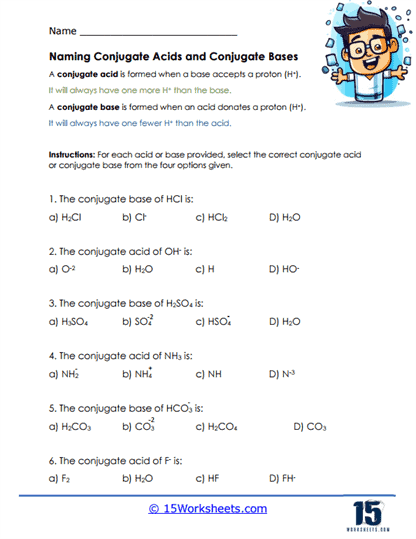Naming Conjugates

Worksheet Description
This worksheet tests the ability to understand and identify the conjugate acids and bases of given acids or bases. The skill involves recognizing the gain or loss of a proton in forming the conjugate species.
A conjugate acid is formed when a base accepts a proton (H+).
It will always have one more H+ than the base.
A conjugate base is formed when an acid donates a proton (H+).
It will always have one fewer H+ than the acid.
Instructions: For each acid or base provided, select the correct conjugate acid or conjugate base from the four options given.
The worksheet provides a series of acids or bases, followed by four multiple-choice options.
The task is to identify which of these options represents the conjugate acid (for a base) or the conjugate base (for an acid).
Understanding the Bronsted-Lowry theory can help. According to this theory, an acid is a proton donor, and a base is a proton acceptor. For example, when HCl donates a proton, it becomes Cl⁻, its conjugate base.
